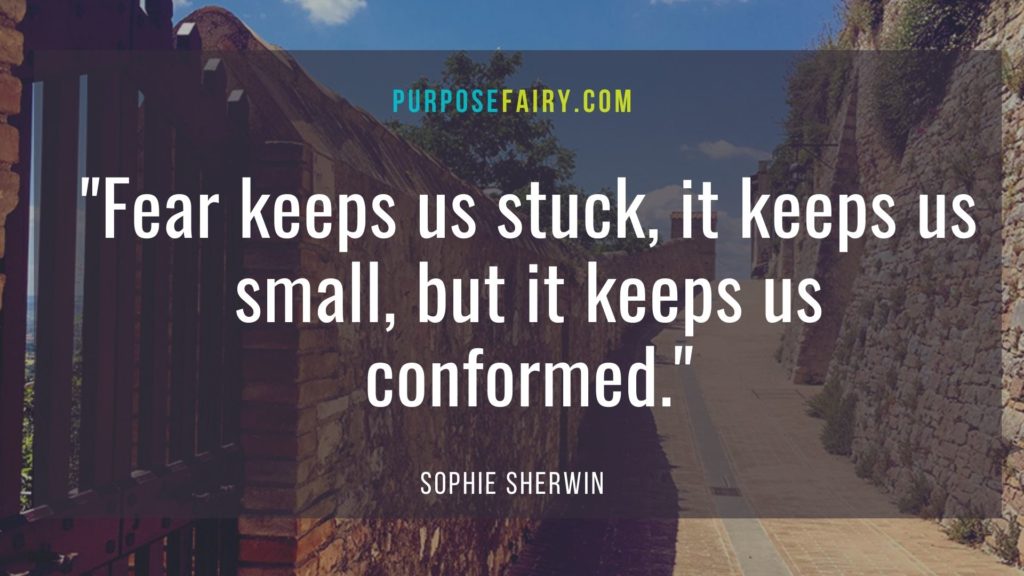ike many of you, I have had dreams in my life, including recurring ones, that were clearly significant. I can’t say I’m an adept interpreter but many of us try to consciously get whatever message we think there may be for us from dreams.
Let’s face it, virtually one third of our lives are spent in the sleeping state yet we know our full consciousness never shuts off. This dream world is a significant one to know about that could teach us many things. That observer inside each of us is getting it all and we need to pay attention and learn.
Several times I have had a strong sense that it’s a parallel existence I was experiencing where perhaps my life had split off and continued on in some different direction, perhaps due to some fundamental decision that I made somewhere along the timeline leading to the one I’m now living in this currently shared 3D existence.
And that can happen every minute of our lives. Quite the mindblowing thought.
The world in those altered dream state places is similar to other dreams but not like anything I’ve seen here. They have commonalities regarding my essential sense of self but they’re distinctly different from those dreams that seem a jumble of influences playing out in an almost random form.
I’m not talking about lucid dreams directly yet, but these have another element that you can sense very deeply and always have a rewarding message if we ponder on them.
Recurring Themes
Twice, including just a few days ago, I distinctly remember waking up to a dream that was not just very vivid, but different. Some of the characters in those dreams were seeming transplants from my current past life here and there and some I didn’t know. But the context of the dream made complete sense.
I’ve thought of most dreams as being an opportunity for my subconscious to process previous events in my life that still needed sorting out and reconciling in some way, or to convey a message to my conscience or subconscious for some reason, as they are often quite revelatory.
I really don’t know but they’re certainly worth noting and reviewing. (Hint: Keep a notepad and pen or some such by your bed. When dreams wake you this is especially important.)
I realized there are these recurring themes in my dreams that seem to revolve around major decisive timeline points, and that may be an indicator of a major split off that happened that was particularly profound. When these recurring themes appear perhaps it’s not us still wrestling with a particularly difficult or traumatic decision or time or event, but maybe they are snap shots and short glimpses into where that life went had it, or in fact did at some level, kept on going in that direction.
I don’t mean to be enigmatic here, but the more I thought about this the more clear it became that these recurring themes seem to revolve around these points in my timeline where major decisions and changes took place. Naturally these are significant changes on their own, but let’s examine it in the light of parallel worlds and timelines occurring concurrently with this one.
Let me use one example from my life, not the subject of this recent dream type I’m describing above, but a good one nonetheless.
Yes, that’s where it comes from, just like the judge’s gavel, our handshake and a whole bunch of other programmed crap…
Oh No! I Didn’t Get My Freemasonic Mortar Board Hat!
I left University after 4 years and pretty much just wandered into my mystical hippy-type searching years. I had a backpack of books and hit the road for California to “find the truth” and meet like-minded people I thought would be there.

I didn’t “graduate” and thought nothing of it. I changed majors every semester and just wandered out after the fourth year of free food and rent thanks to my father who had hoped I would follow in his footsteps. I was totally restless and uncertain not of just what I wanted to do, but who the heck I was and what was I here on earth for. You know, the light stuff…ha. But as a result I didn’t qualify for the philosophy degree I was apparently shooting for, having changed majors every semester.
My authoritarian corporatist father with his high falutin’ doctorate degree was pissed and thereupon smothered me in silence, as was his way. I can understand from his paradigm – he paid for my schooling and I rejected the whole ball of wax. He remained silent about this until his death but I suffered guilt about this apparently because I had recurring dreams for years about this missing “degree” I supposedly should have gotten.
Thankfully this sorted out after my latest much more full conscious awakening and we’re friends now, having visited together in dreams for some time.
And yes, that blew my mind.
Was I sorting out buried guilt? Clearly at the least father, and mother, issues are a biggie for many people, they certainly were for me. Is that what is sorting out here? Am I replaying old fears repeatedly simply due to old programming and experiences? Or are some of these dreams parallel lives where I lived on in that academic environment having been a “good boy” and finished up?
Or could they be a mixture? Does our dream life evolve with our coming into greater conscious awareness?
I think that’s part of it, but I really don’t know.
I have to say, though, this new understanding of themes and timelines as a possible link to insights into the existence of parallel worlds has had an immediate wonderful effect of helping me detach from these very involved, personal and often intense dreams and observe them much more objectively.
I like that. It’s not bound up in emotion. And as I said, reconciliation happens in mysterious ways. But it does happen. And in way deeper aspects as we reconcile with our very nature of existence.
Parallel Worlds and Timelines
There is a lot written about this subject and the potential for infinite worlds, a literal multiverse of endless potential. Quite remarkable from our little earthly standpoint and our seeming 3 dimensional reality. Our mental understanding is so limited, while our consciousness not only already knows this boundless potential, but is connected to and experiences it continually.

Ours is to let that arise within and without us and let it supersede our clod-bound minds, sense of self, and perception of our surroundings.
If we do subscribe to that parallel universe and timeline understanding, or even that conscious reparations are going on, then it is no wonder dreams may seem disjointed and nonsensical. Perhaps several parallel lives are peeking through and overlapping on occasion. I do know that sometimes for me it appears to be another reality construct that is not the continuation of this one, and that it appears more so as the vibrational times keep changing.
And that understanding resonates with me. But again, that may change.
Some people have amazing gifts regarding seeing and understanding this phenomenon. Physicists flatly say there are at least 11 dimensions right now floating around us without time being a factor. Others say there are at least 100 dimensions. Knowing the pace of modern science vs consciousness I think they’ll get to that infinite potential number pretty quick when they finally realize the multiverse cannot be put into their test tube bottles and labelled and filed away. I.e. the mind will never grasp it.
Never. It’s beyond mind, little men, let it go.
Any way you perceive it, this is definitely something to keep researching and following, looking for those hints and nudges to find out more about how we can continue to tap into this infinite potential.
Recurring Dreams
Besides these recurring themes, there’s only been one dream in my life that I kept having over and over. I’ve written about this before, but it happened between the ages of 5 and 7. It’s still as vivid to me now as it was then over 6 decades ago.
And I consider it quite significant, for me.
Again, there are parallel worlds and collectively our planet and its inhabitants are making decisions daily as to its course into the future. I don’t know what’s set or what isn’t, but I suppose it runs on possibilities with some outcomes more likely than others at any given time. I don’t pretend to know all the factors that influence us or all the mechanics, but I know it’s a hell of a lot more than what we’re taught or told or supposedly “allowed to know” by those engineering this current matrixand the control of its inhabitants.

The Dream
The world was erupting. Volcanoes were going off everywhere. It was the end of the world and hot, with molten lava spreading everywhere.
I fled to a familiar spot where I used to play with my friends in someone’s driveway. It was also one of those “cut through the neighborhood” short cuts to get between streets.
I had to run because lava was coming closely towards me down a slight embankment, while distant fields of lave could be seen approaching from every direction. I was seeing two scenes at once. The neighborhood I was in and the place I had fled to, but I could see the landscape of the world was all having the same volcanic phenomenon. There was nowhere to run for anybody and you could only find temporary relief in safe spots until the eruptions and lava reached you.
I was in this driveway we used to play in as the lava approached. One side of the driveway had a huge hedge, way tall in front of some large trees next to where we’d plays games in front of the garage and goof around. As I looked around on this seemingly doomed scenario, suddenly a hole opened up in the hedge. It was about 2 feet wide and around chest high for my little body.
I ran over to it and dove in head first.
Shot Into Space
The next thing I knew this giant vacuum hose somehow immediately sent me flying into space. It was amazing. There I was with my arms outstretched floating perfectly silently into outer space. Earth was nowhere to be seen. I was out there! Just sailing in perfect stillness, marveling at the glorious view and experience.
And I woke up. I had this dream at least 5 or 6 times that I remember, maybe more.

Every time the exact same dream. No variations. It was disturbing and yet really, really beautiful and peaceful at the same time. I’ve always been fascinated by volcanoes and major earth changes. The awesome power of nature just feels right when you appreciate it. It really puts us in our puny place in the grand scheme of things.
Was I accessing the escape hatch? The stargate-express to ultimate freedom?
Who knows. Maybe something like that will open up to us. Maybe it symbolizes the death experience and our consciousness just goes back to where it came from. The fascination for wormholesand stargates certainly attests to that archetype having a strong influence on us. The existence of such portals has been portrayed for millennia.
And back then, at 5 or 6 years old, there were no wormhole or stargate teachings going on in the 50’s, at least that I ever heard about at that young age. We did have Flash Gordon and his cardboard spaceship and those hokey dinosaur movies, and perhaps they were enough to stimulate our little imaginations. Or we were being shown something.
Today’s high tech entertainment leaves little for the imagination…they do all the imagining for their target audience and steer the poor unsuspecting kids into dark satanic netherworlds and gratuitous violence and end of the world scenarios. More social engineering at work. But still, they can’t fully suppress consciousness.
Going Deeper and the Dream State
The subjects of dreams, parallel dimensions and alternate timelines deserve serious attention. There’s so much to learn if we can process the fullness of our conscious and even currently unconscious experience. If our perspective doesn’t take everything into consideration we’re operating on partial understanding.
That’s the beauty of consciousness. It’s like having a built-in wormhole to everything if we can learn to access it fully. All possibility awaits us.
More profoundly, these types of dreams remind us that because we are on these different paths, our current environment is essentially of our own making by our power of choice. We are co-creators of this life here via our individual decisions, which implies that what we react to and how we react are extremely important to the overall milieu we live in.
Are the “bad guys” good for us, prodding us to learn to react consciously at some level? Certainly it’s “allowed” at some level. What is this seeming contest ultimately all about?
Is this existence really “it”? I surely don’t think so. It’s just another dream – a shared one but still a dream.

As I see it we are co-directing a group lucid dream, one we can interact with, and it’s only one of many possible ones. Are we destined to keep repeating these challenges on some level until we get the point?
Maybe life is a circular cycle until we get the point. Maybe at that point they’ll stop spinning their screw cap and catch the threads of truth and really drill down in the spiral to greater awakening.
Hmmm….
Conclusion
The subjects of dreams and parallel dimensions and alternate timelines deserve serious attention. There’s so much to learn if we can process the fullness of our conscious and even currently unconscious experience. If our perspective doesn’t take everything into consideration we’re operating on partial understanding.
That’s the beauty of consciousness. It’s like having a built-in wormhole to everything if we can learn to access it fully. All possibility awaits us.
As articulated above, these types of dreams remind us that because we are on these different potential paths, our current environment is essentially of our own making by our power of choice. We are co-creators of this life here.
Now that is not just extremely liberating, but an awesome responsibility. That’s where consciousness kicks in – or doesn’t.
Ultimately we just need to fully be who we already are as we continue on in our higher education, with a fearless love of truth and the compassion to care about our full physical and metaphyical environment.
Think on it.
Here’s to turning it all on!
Warp speed, anyone?
Much love, Zen














